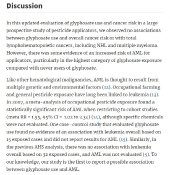posted 1 year ago
Christopher -
I'll have to give this paper a read, but the abstract already has my attention.
What constitutes a species is one of those questions which "improves upon acquaintance".
There are ring species in the arctic, in which geographically adjacent sub-species are interfertile (I think that's the correct term?), but more geographically distant species aren't under natural conditions - whether due to behavioral differences (included, but not limited to, mating behaviors) or other considerations.
A lot of cats are cross fertile. But, maybe not all, even under implausibly unnatural laboratory conditions.
Wolves, domestic dogs and coyotes can all produce viable offspring, and I am pretty sure I've seen reference to coyote-dog mixes which implied fertile hybrids. For sure, timber wolves and domestic dogs can produce fertile offspring.
Grizzlies and polar bears are cross fertile.
Domesticated cattle and American bison are cross fertile.
Critters are the glamorous ones to discuss, but it wouldn't surprise me if there are similar hybridizations possible among taxonomically close plant species, as well.
Thanks for the reference!
Kevin
"Ah, but a man's reach should exceed his grasp,
Or what's a heaven for?"
Andrea del Sarto by Robert Browning









